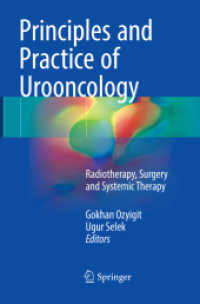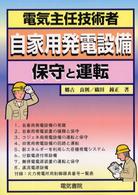Full Description
This is the second volume of a comprehensive two-volume treatise on superconductivity that represents the first such publication since the earlier widely acclaimed books by R. Parks. It systematically reviews the basic physics and recent advances in the field. Leading researchers describe the state of the art in conventional phonon-induced superconductivity, high-Tc superconductivity, and in novel superconductivity, including triplet pairing in the ruthenates. The second volume is largely concerned with novel superconductors, such as heavy-fermion metals and organic materials, and also includes granular superconductors. Important new results on current problems are presented in a manner designed to stimulate further research. Numerous illustrations, diagrams and tables make this book especially useful as a reference work for students, teachers and researchers. Volume 1 treats Conventional and High-Tc Superconductors (3-540-43883-1).
Contents
1 Recent Developments.- 2 Nanostructured Superconductors.- 3 Proximity-Coupled Systems: Quasiclassical Theory of Superconductivity.- 4 Universal Properties of Cuprate Superconductors: Evidence and Implications.- 5 Photoemission in the High-Tc Superconductors.- 6 Concepts in High Temperature Superconductivity.- 7 Organic Superconductors.- 8 Unconventional Superconductivity in Novel Materials.- 9 Electronic Theory for Superconductivity in High-Tc, Cuprates and Sr2Ru04.- 10 Heavy Fermion Superconductivity.- 11 Superfluid 3He and the Cuprate Superconductors.- Author Index.- of Volume I.- History of Superconductivity.- K. H. Bennemann, J . B. Ketterson.- 1.1 Introduction.- 1.2 High Transition-Temperature Superconductivity and Novel Superconductors.- 1.3 Summary.- 2 Theoretical Foundation: Phenomenology and Microscopic Theory.- L. Pitaevskii.- 2.1 Non-Diagonal Long Range Order and Superfluidity.- 2.2 Non-Diagonal Long Range Order in Superconductors.- 2.3 London Equation.- 2.4 Thermodynamics of Superconductors in a Magnetic Field.- 2.5 The Intermediate State of Superconductors.- 2.6 The Ginzburg-Landau Theory.- 2.7 Surface Energy at the Boundary Between Normal and Superconducting Phases.- 2.8 Superconductors of the Second Kind.- 2.9 Quantized Vortex Lines.- 2.10 Vortex-Vortex Interactions.- 2.11 Cooper-Pairing.- 2.12 Energy Spectrum of a Superconductor.- 2.13 Thermodynamic Properties of Superconductors.- 2.14 Elements of the Theory of Green's Functions.- 2.15 Green's Function of a Superconductor.- 2.16 Temperature Green's Functions.- 2.17 Temperature Green's Functions of a Superconductor.- 3 Fluctuation Phenomena in Superconductors.- A. 1. Larkin, A. A. Varlamov.- 3.1 Introduction.- 3.2 Ginzburg-Landau Formalism : Thermodynamics.- 3.3 Fluctuations Below the CriticalTemperature.- 3.4 Ginzburg-Landau Theory of Fluctuations in Transport Phenomena.- 3.5 Fluctuations Near S-I Transition.- 3.6 Microscopic Derivation of the TDGL Equation.- 3.7 Fluctuation Conductivity.- 3.8 Manifestation of Fluctuations in Various Properties.- 3.9 Conclusions.- 4 Electron-Phonon Superconductivity.- F . Marsiglio, J. P. Carbotte.- 4.1 Introduction.- 4.2 The Electron-Phonon Interaction: Overview.- 4.3 The Phonons.- 4.4 The Critical Temperature and the Energy Gap.- 4.5 Thermodynamics and Critical Magnetic Fields.- 4.6 Response Functions.- 4.7 Summary.- 4.8 Appendix: Microscopic Developments.- 5 Theory of Superconducting Alloys.- L. P. Gor'kov.- 5.1 Introduction.- 5.2 Averages of Green Functions Over Impurities.- 5.3 Superconducting Alloys with a Small Gap.- 5.4 Paramagnetic Alloys and Gapless Superconductivity.- 5.5 Eilenberger Equations.- 5.6 Final Remark.- H. R. Ott.- 6.1 Introduction.- 6.2 Typical Structural Characteristics.- 6.3 Occurrence of Superconductivity.- 6.4 Physical Properties of Copper Oxides.- 6.6 Final Remarks.- 7 Spin Fluctuation Model for d-wave Superconductivity.- A. V. Chubukov, D. Pines, and J. Schmalian.- 7.1 Introduction and Overview.- 7.2 Spin-Fermion Model.- 7.3 Summary of Strong-Coupling Theory for Electron-Phonon Pairing.- 7.4 Strong-Coupling Approach to Spin-Fermion Interaction.- 7.5 Fingerprints of Spin Fermion Pairing.- 7.6 Comparison with the Experiments on Cuprates.- 7.7 Conclusions.- 8 Tunneling Spectroscopy of Conventional and Unconventional Superconductors.- J . Zasadzinski.- 8.1 Introduction.- 8.2 Basic Tunneling Phenomenology.- 8.3 Tunneling and Strong-Coupling Effects: Microscopic Picture.- 8.4 Tunneling Spectroscopy of Conventional Superconductors.- 8.5 Tunneling in High-Temperature Superconductors.- 8.6 HeavyFermion Sup erconductors.- 8.7 Organic Superconductors.- 8.8 Other Materials.- 8.9 Conclusions.- 9 Pairing Symmetry in Cuprate Superconductors: Phase-Sensitive Tests.- C. C. Tsuei, J. R. Kirtley.- 9.1 Introduction.- 9.2 Phase-Sensitive Tests: Theoretical Background.- 9.3 Phase-Sensitive Tests: Experiments.- 9.4 Universality of t he d-Wave Pair State.- 9.5 Implications of d-Wave Pairing Symmetry.- 9.6 Conclusions.- 10 Vortex Matter.- G. Blatter, V. B. Geshkenbein.- 10.1 Introduction.- 10.2 Ginzburg-Landau- and London Theories.- 10.3 Vortex Lines.- 10.4 Vortex Lattice.- 10.5 Layered Materials.- 10.6 Anisotropic Scaling Theory.- 10.7 Statistical Mechanics.- 10.8 Quenched Disorder : Pinning and Creep.- 10.9 Uncorrelated Disorder: Collective Pinning and Creep.- 10.10 Correlated Disorder.- 10.11 Surface- and Geometrical Barriers.- 10.12 Vortex Glasses.- 10.1 3 Concluding Remarks.








